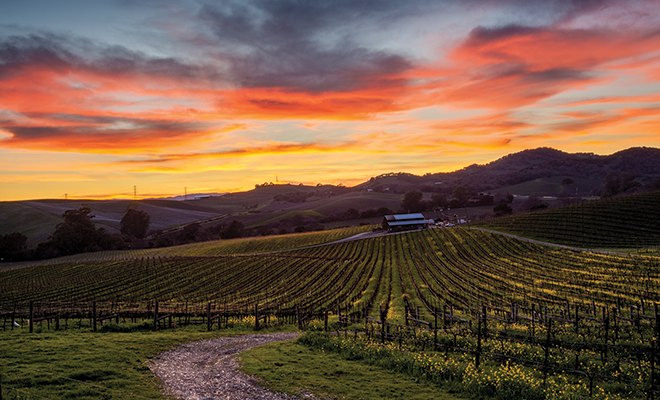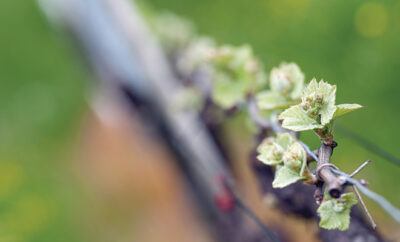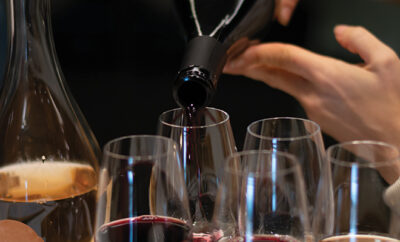
Complementing Each Other: Farm to Table and Grape to Glass
If they haven’t come to your favorite restaurant yet, farm-to-table-concepts are making their way throughout the United States and to a favorite local chef near you. Everything on the table, and frequently the table itself, is sourced from local providers as much as possible.
There’s a new thirst for knowing where our food comes from, and that has enhanced the conversation around our table about supporting local farmers in every way. This time of year we observe the harvesting equipment and farm stands and we extend our salute to farmers of all types. Grape to glass falls into this focus as well, and it’s an especially fun idea to dive into during the month of September.
September is still quite a warm month in many parts of the country. Much of the produce, such as artichokes, garlic, celery, plums, broccoli, nuts and more, is being packaged for shipment throughout the world and also to local towns. In many regions, local restaurants are boasting menus featuring produce grown within 50 miles. These menus have evolved to advise us where the golden beets were grown, who raised the grass-fed cattle and the name of the local dairy that was star of your pre-dinner cheese plate.
Wine and beer are enjoying the natural extension of this philosophy as well. The craft beer scene is filled with successful brew masters creating unique small-batch beer profiles in a boutique setting. Tap rooms boast as many as 20 local beers created by harvesting hops, using higher quantities of hops per liter than more traditional bottled or canned beers on the supermarket shelves.
In September, the wineries are quite busy with vine assessments, harvest, fermentation, aging and bottling their local crop into wine. It takes more than 700 grapes to produce one bottle of wine! With wine grapevines being the largest fruit crop on earth, fall is a great time to recognize wine as an agricultural product. Just as pears and tomatoes are affected by terrain and weather, the same factors affect the wine grape crop. Changing and unpredictable weather patterns demonstrate that wine grape growers must adapt and plan ahead three to five years, envisioning how their yields may support both their family’s livelihood and the quality wine that consumers enjoy.
Just as your local farmer, market and restaurant highlight where the food item came from, it’s as important to mention how the item was grown and selected for you. Organic farming, sustainable resources and naturally grown are not marketing terms any longer; these concepts have an impact on which products we select for ourselves and our families. Wine grape vineyards can be dry-farmed, naturally farmed and organically managed; the label on the back of the bottle will proudly share the grower’s environmentally sustainable wine-producing methods so that you can be sure you are getting the quality of wine you enjoy most. Many wine grape growers are dedicated to healthful, sustainable practices that help nurture the land and ultimately provide quality wines that may be lower in alcohol, sulfites or interference.
Are you taking a vacation? How about an extended weekend getaway or even a day trip? If you’re a foodie and appreciate quality, locally sourced food and wine, there are great ways to live what you eat. Wine and eco-tourism throughout the country is a multi-billion dollar industry for good reason.
In your own state or wherever you’re visiting, sign up for farm and vineyard tours that take you through several farms in the region. Often guided by family members, these tours are opportunities to understand why and how they planted at that location in addition to demonstrations that include cooking and tasting.
Look for vineyards or farms that encourage you to get your hands dirty. These locations will teach you what to look for when selecting and harvesting the wine grapes. You might be required to be on site as early as 4:00 a.m.
Restaurants, smaller grocers and farmers’ markets regularly present cooking demonstrations and classes designed to teach you healthful awareness of where your wine, food and produce are coming from. They’re often hosted by a culinary expert, and you’ll add to your kitchen repertoire while eating your reward.
Wine production is a multi-stage process. Sign up for wine blending classes, often hosted by the winemaker, and learn how different varietals can support each other in creating that perfect mouth feel. The best part is taking home your work!
With all the bounty fall provides, September’s also a month to recognize local farmers. As the heat begins to fade, select a few local farmers you can visit and get to know. This time of year, all the growers are working hard in the vineyards and fields, ensuring a colorful and robust harvest for all of us to enjoy! ■
Sources: abc.net.au, cawg.org, discovercaliforniawines.com and slate.com.







